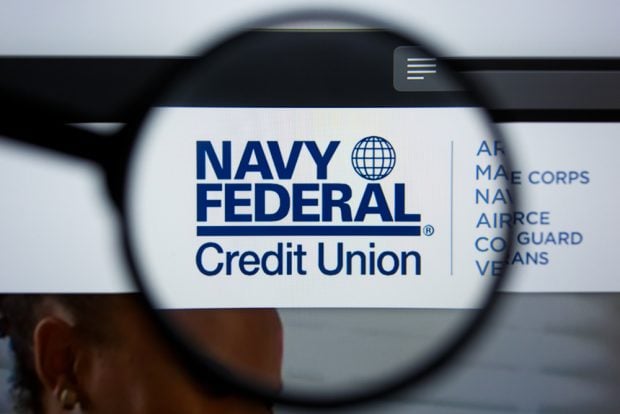It's been 12 years since Credit Union Times burst on the credit union scene. Much has changed in the world of credit unions since volume one, number one landed on credit union desks. Much hasn't. John Buddle, CEO of MSIC (Massachusetts Credit Union Share Insurance Corporation), was cleaning out some old files at home recently when he came across our very first issue. He sent it to me with a note saying he thought I might find it of interest. Looking at what made news back then, I did. Readers might too. Here's some of what appeared in that first issue, March 26, 1990: the American Bankers Association (ABA) was proposing a three-part tax test for credit unions; CUs were learning what to do in the unlikely event of an armed robbery; two CU-exclusive credit card processors were duking it out; credit unions in Dallas were dueling over FOM rights; and the future of the newly-created AARP FCU was already in doubt. Also, Joe Schroeder became one of the first CU marketers to make the leap to CU CEO; Representative Paul Kanjorski (D-Pa.) took to the NAFCU Congressional Caucus stage to extol the virtues of credit unions; economist Dr. Harold Black painted a generally rosy view of the economy; and authorities were warning credit unions that they had better beef up ATM security. As for my first of over 700 consecutive weekly publisher's columns, I lectured national credit union groups on what it takes to be an effective leader, giving many specific examples where they may be falling short. Whew! All that in a mere 16 pages, mostly black and white, with a grand total of seven display ads. Fast forward to Spring of 2002 and you will see most of those same news stories in our pages with, in some cases, essentially the same cast of characters. Take that ongoing adversary the ABA for example. If you think they demonstrate chutzpah today as evidenced by telling credit unions recently that they would be better off giving up the fight to protect their tax-exemption and putting all those resources into better serving members, compare that admonition to the approach they took back then. In a memorandum sent to all state banking associations in early March 1990, the ABA laid out a very specific plan they urged credit unions to embrace in order to retain the tax-exemption. The ABA plan called for credit unions to meet three criteria in order to remain tax-exempt: Only credit unions less than $10 million in assets could continue to be covered under the tax-exemption. To be tax-exempt, a credit union must not make loans, accept deposits, or provide any other services to commercial firms, or government entities. Tax-exempt credit unions must maintain a written statement of a single common bond of membership. The CU must be for natural persons that have a common employer, a common place of education, or similar relationship that must include a common objective and a commingling of members as a material part of the organization. To make sure their intent was understood, ABA went on to point out that community based credit unions do not meet this test. "In other words," said ABA, "exemption from federal income taxation would be continued for those credit unions that continue to fulfill the purpose and mission of service which was intended when such exemption was granted." A dozen years later, it is clear just how much impact that ABA decree to eliminate credit unions had on the credit union industry. None! Of course the battle is far from over. It is playing out in virtually every 2002 issue of this publication. ABA remains convinced that it is somewhere engrained in its own not-for-profit charter to tell credit unions exactly what to do that would please ABA. Just recently, in a much heralded debate in California between a CUNA executive and an ABA staffer, it was made crystal clear that the ABA's arrogance has not subsided in the least. The ABA spokesman "suggested" that ABA's ongoing effort to strip away the credit union tax exemption would be successful if only credit unions would simply voluntarily give up the exemption in return for a banking industry promise not to block the ability of credit unions to expand their range of products and services. "This would allow credit unions to better serve your members," said the ABA spokesperson. Have these high-handed tactics bore any banking fruit? In another news item in that same 1990 issue, it was noted that the credit union industry had reached a new milestone of $200 billion in assets. That compares to today's total industry assets of in excess of $500 billion. Not a bad 12-year run is spite of ABA shenanigans! As for the other news stories of the day cited above, here's what's happened: armed robberies have proliferated with credit unions becoming a regular target; and the credit union credit card business has become more competitive with new players from outside CUs seeking to buy their way in credit union by credit union. Also, credit unions continue to fight over FOM "rights," but alleged overlapping is less of an issue as more CUs apply for and get permission to serve ever larger geographical FOMs; the AARP FCU did in fact fold, a victim of politics and failed strategy despite what was great potential to serve millions more Americans; ATM security continues to be a concern; and Joe Schroeder is still a successful CU CEO, one of many since spawned by the credit union marketing profession. As for credit union friendly politicians, they are still around. So are economists with their bag of up and down predictions. So am I. Some things never change. Comments? Call 1-800-345-9936, Ext. 15, or Fax 561-683-8514, or E-mail [email protected].
© Touchpoint Markets, All Rights Reserved. Request academic re-use from www.copyright.com. All other uses, submit a request to [email protected]. For more inforrmation visit Asset & Logo Licensing.






